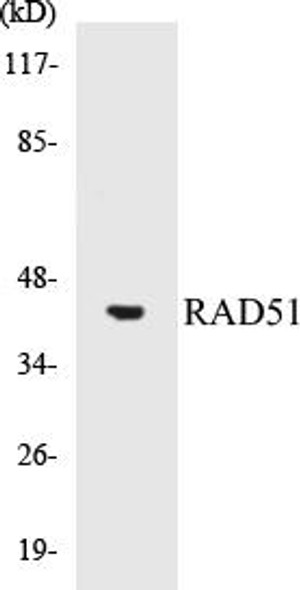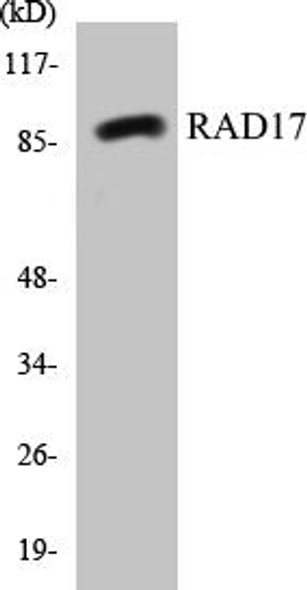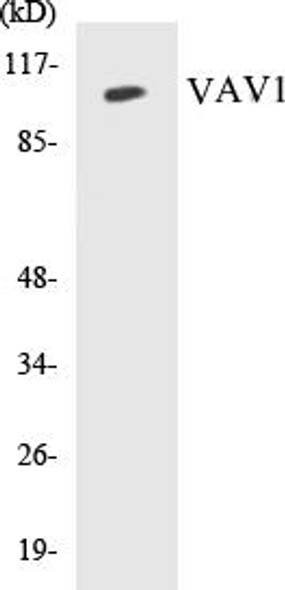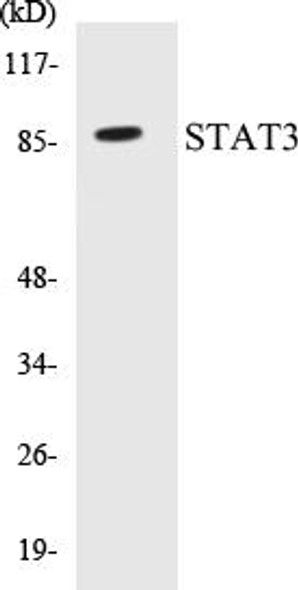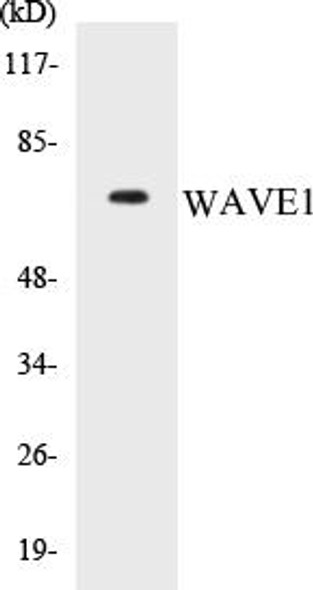HDAC4 Colorimetric Cell-Based ELISA Kit
- SKU:
- CBCAB00309
- Product Type:
- ELISA Kit
- ELISA Type:
- Cell Based
- Research Area:
- Epigenetics and Nuclear Signaling
- Reactivity:
- Human
- Mouse
- Rat
- Detection Method:
- Colorimetric
Description
HDAC4 Colorimetric Cell-Based ELISA Kit
The HDAC4 Colorimetric Cell-Based ELISA Kit is a cutting-edge assay designed for the accurate measurement of HDAC4 levels in cell lysates and culture supernatants. This kit offers superior sensitivity and specificity, delivering reliable and reproducible results for a variety of experimental settings.HDAC4, or histone deacetylase 4, is a crucial enzyme involved in the regulation of gene expression and chromatin remodeling. Dysregulation of HDAC4 has been implicated in various diseases, including cancer, neurodegenerative disorders, and cardiovascular diseases.
Therefore, accurate measurement of HDAC4 levels is essential for understanding its role in disease pathogenesis and exploring potential therapeutic interventions.With the HDAC4 Colorimetric Cell-Based ELISA Kit, researchers can confidently study the impact of HDAC4 on cellular processes and disease progression, ultimately advancing our knowledge of disease mechanisms and drug discovery efforts.
| Product Name: | HDAC4 Colorimetric Cell-Based ELISA |
| Product Code: | CBCAB00309 |
| ELISA Type: | Cell-Based |
| Target: | HDAC4 |
| Reactivity: | Human, Mouse, Rat |
| Dynamic Range: | > 5000 Cells |
| Detection Method: | Colorimetric 450 nmStorage/Stability:4°C/6 Months |
| Format: | 96-Well Microplate |
The HDAC4 Colorimetric Cell-Based ELISA Kit is a convenient, lysate-free, high throughput and sensitive assay kit that can detect HDAC4 protein expression profile in cells. The kit can be used for measuring the relative amounts of HDAC4 in cultured cells as well as screening for the effects that various treatments, inhibitors (ie siRNA or chemicals), or activators have on HDAC4.
Qualitative determination of HDAC4 concentration is achieved by an indirect ELISA format. In essence, HDAC4 is captured by HDAC4-specific primary antibodies while the HRP-conjugated secondary antibodies bind the Fc region of the primary antibody. Through this binding, the HRP enzyme conjugated to the secondary antibody can catalyze a colorimetric reaction upon substrate addition. Due to the qualitative nature of the Cell-Based ELISA, multiple normalization methods are needed:
| 1. | A monoclonal antibody specific for human GAPDH is included to serve as an internal positive control in normalizing the target absorbance values. |
| 2. | Following the colorimetric measurement of HRP activity via substrate addition, the Crystal Violet whole-cell staining method may be used to determine cell density. After staining, the results can be analysed by normalizing the absorbance values to cell amounts, by which the plating difference can be adjusted. |
| Database Information: | Gene ID: 9759, UniProt ID: P56524, OMIM: 605314, Unigene: Hs.20516 |
| Gene Symbol: | HDAC4 |
| Sub Type: | None |
| UniProt Protein Function: | HDAC4: a transcriptional regulator of the histone deacetylase family, subfamily 2. Deacetylates lysine residues on the N-terminal part of the core histones H2A, H2B, H3 AND H4. Plays an important role in transcriptional regulation, cell cycle progression and developmental events. Does not bind DNA directly, but through transcription factors MEF2C and MEF2D. It seems to interact in a multiprotein complex with RbAp48 and HDAC3. |
| UniProt Protein Details: | Protein type:Hydrolase; EC 3.5.1.98; Deacetylase; Nuclear receptor co-regulator Chromosomal Location of Human Ortholog: 2q37.3 Cellular Component: nucleoplasm; transcriptional repressor complex; histone deacetylase complex; cytoplasm; actomyosin; neuromuscular junction; nucleus; Z disc; cytosol; A band Molecular Function:potassium ion binding; transcription activator binding; zinc ion binding; histone deacetylase binding; protein deacetylase activity; protein kinase binding; transcription factor binding; protein binding; NAD-dependent histone deacetylase activity (H3-K9 specific); NAD-dependent histone deacetylase activity (H3-K14 specific); sequence-specific DNA binding; NAD-dependent histone deacetylase activity (H4-K16 specific); histone deacetylase activity; transcription corepressor activity Biological Process: cardiac muscle hypertrophy; response to drug; nervous system development; regulation of skeletal muscle fiber development; transcription, DNA-dependent; B cell activation; negative regulation of transcription factor activity; positive regulation of transcription, DNA-dependent; histone deacetylation; response to denervation involved in regulation of muscle adaptation; negative regulation of transcription from RNA polymerase II promoter; regulation of gene expression, epigenetic; osteoblast development; positive regulation of protein sumoylation; chromatin remodeling; negative regulation of cell proliferation; B cell differentiation; regulation of protein binding; positive regulation of cell proliferation; positive regulation of transcription from RNA polymerase II promoter; positive regulation of transcription factor activity; negative regulation of osteoblast differentiation; negative regulation of transcription, DNA-dependent; negative regulation of glycolysis; inflammatory response; skeletal development |
| NCBI Summary: | Histones play a critical role in transcriptional regulation, cell cycle progression, and developmental events. Histone acetylation/deacetylation alters chromosome structure and affects transcription factor access to DNA. The protein encoded by this gene belongs to class II of the histone deacetylase/acuc/apha family. It possesses histone deacetylase activity and represses transcription when tethered to a promoter. This protein does not bind DNA directly, but through transcription factors MEF2C and MEF2D. It seems to interact in a multiprotein complex with RbAp48 and HDAC3. [provided by RefSeq, Jul 2008] |
| UniProt Code: | P56524 |
| NCBI GenInfo Identifier: | 259016348 |
| NCBI Gene ID: | 9759 |
| NCBI Accession: | P56524.3 |
| UniProt Secondary Accession: | P56524,Q86YH7, Q9UND6, E9PGB9, F5GX36, |
| UniProt Related Accession: | P56524 |
| Molecular Weight: | Calculated MW: 106kDa/119kDaObserved MW: 117kDa |
| NCBI Full Name: | Histone deacetylase 4 |
| NCBI Synonym Full Names: | histone deacetylase 4 |
| NCBI Official Symbol: | HDAC4 |
| NCBI Official Synonym Symbols: | HD4; AHO3; BDMR; HDACA; HA6116; HDAC-4; HDAC-A |
| NCBI Protein Information: | histone deacetylase 4; histone deacetylase A |
| UniProt Protein Name: | Histone deacetylase 4 |
| UniProt Gene Name: | HDAC4 |
| UniProt Entry Name: | HDAC4_HUMAN |
| Component | Quantity |
| 96-Well Cell Culture Clear-Bottom Microplate | 2 plates |
| 10X TBS | 24 mL |
| Quenching Buffer | 24 mL |
| Blocking Buffer | 50 mL |
| 15X Wash Buffer | 50 mL |
| Primary Antibody Diluent | 12 mL |
| 100x Anti-Phospho Target Antibody | 60 µL |
| 100x Anti-Target Antibody | 60 µL |
| Anti-GAPDH Antibody | 60 µL |
| HRP-Conjugated Anti-Rabbit IgG Antibody | 12 mL |
| HRP-Conjugated Anti-Mouse IgG Antibody | 12 mL |
| SDS Solution | 12 mL |
| Stop Solution | 24 mL |
| Ready-to-Use Substrate | 12 mL |
| Crystal Violet Solution | 12 mL |
| Adhesive Plate Seals | 2 seals |
The following materials and/or equipment are NOT provided in this kit but are necessary to successfully conduct the experiment:
- Microplate reader able to measure absorbance at 450 nm and/or 595 nm for Crystal Violet Cell Staining (Optional)
- Micropipettes with capability of measuring volumes ranging from 1 µL to 1 ml
- 37% formaldehyde (Sigma Cat# F-8775) or formaldehyde from other sources
- Squirt bottle, manifold dispenser, multichannel pipette reservoir or automated microplate washer
- Graph paper or computer software capable of generating or displaying logarithmic functions
- Absorbent papers or vacuum aspirator
- Test tubes or microfuge tubes capable of storing ≥1 ml
- Poly-L-Lysine (Sigma Cat# P4832 for suspension cells)
- Orbital shaker (optional)
- Deionized or sterile water
*Note: Protocols are specific to each batch/lot. For the correct instructions please follow the protocol included in your kit.
| Step | Procedure |
| 1. | Seed 200 µL of 20,000 adherent cells in culture medium in each well of a 96-well plate. The plates included in the kit are sterile and treated for cell culture. For suspension cells and loosely attached cells, coat the plates with 100 µL of 10 µg/ml Poly-L-Lysine (not included) to each well of a 96-well plate for 30 minutes at 37°C prior to adding cells. |
| 2. | Incubate the cells for overnight at 37°C, 5% CO2. |
| 3. | Treat the cells as desired. |
| 4. | Remove the cell culture medium and rinse with 200 µL of 1x TBS, twice. |
| 5. | Fix the cells by incubating with 100 µL of Fixing Solution for 20 minutes at room temperature. The 4% formaldehyde is used for adherent cells and 8% formaldehyde is used for suspension cells and loosely attached cells. |
| 6. | Remove the Fixing Solution and wash the plate 3 times with 200 µL 1x Wash Buffer for five minutes each time with gentle shaking on the orbital shaker. The plate can be stored at 4°C for a week. |
| 7. | Add 100 µL of Quenching Buffer and incubate for 20 minutes at room temperature. |
| 8. | Wash the plate 3 times with 1x Wash Buffer for 5 minutes each time. |
| 9. | Add 200 µL of Blocking Buffer and incubate for 1 hour at room temperature. |
| 10. | Wash 3 times with 200 µL of 1x Wash Buffer for 5 minutes each time. |
| 11. | Add 50 µL of 1x primary antibodies (Anti-HDAC4 Antibody and/or Anti-GAPDH Antibody) to the corresponding wells, cover with Parafilm and incubate for 16 hours (overnight) at 4°C. If the target expression is known to be high, incubate for 2 hours at room temperature. |
| 12. | Wash 3 times with 200 µL of 1x Wash Buffer for 5 minutes each time. |
| 13. | Add 50 µL of 1x secondary antibodies (HRP-Conjugated AntiRabbit IgG Antibody or HRP-Conjugated Anti-Mouse IgG Antibody) to corresponding wells and incubate for 1.5 hours at room temperature. |
| 14. | Wash 3 times with 200 µL of 1x Wash Buffer for 5 minutes each time. |
| 15. | Add 50 µL of Ready-to-Use Substrate to each well and incubate for 30 minutes at room temperature in the dark. |
| 16. | Add 50 µL of Stop Solution to each well and read OD at 450 nm immediately using the microplate reader. |
(Additional Crystal Violet staining may be performed if desired – details of this may be found in the kit technical manual.)



